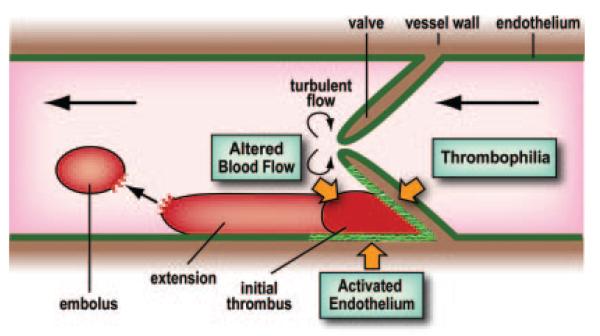Figure.
Formation of a deep vein thrombus. The cartoon shows factors that may contribute to the formation of a thrombus in a large vein, such as thrombophilia, activated endothelium, and altered blood flow. The presence of valves in veins leads to turbulent flow and reduced oxygenation of the valve endothelium (light green) that may activate the endothelium and allow a thrombus to form. Once formed, the thrombus may extend along the vessel and embolize. Valve pocket thrombi have been analyzed in femoral veins12. Red areas containing mostly red cells and fibrin are the likely sites of origin of the thrombi, whereas the propagating thrombus consists of platelets with fibrin borders12. A recent study of saphenous veins indicated that the valvular endothelium has a thromboresistant phenotype compared with the endothelium of the non-valvular venous wall13, although this resistance may be lost under pathological conditions.

